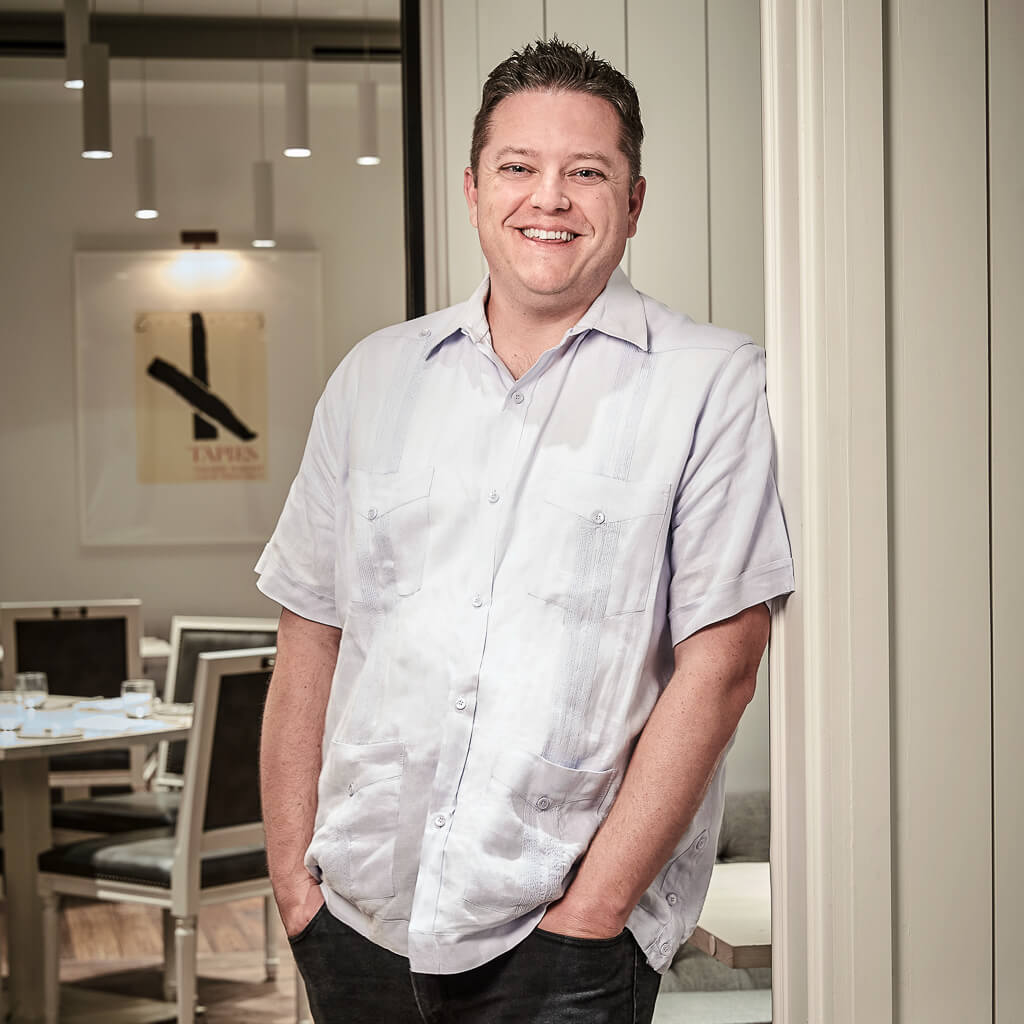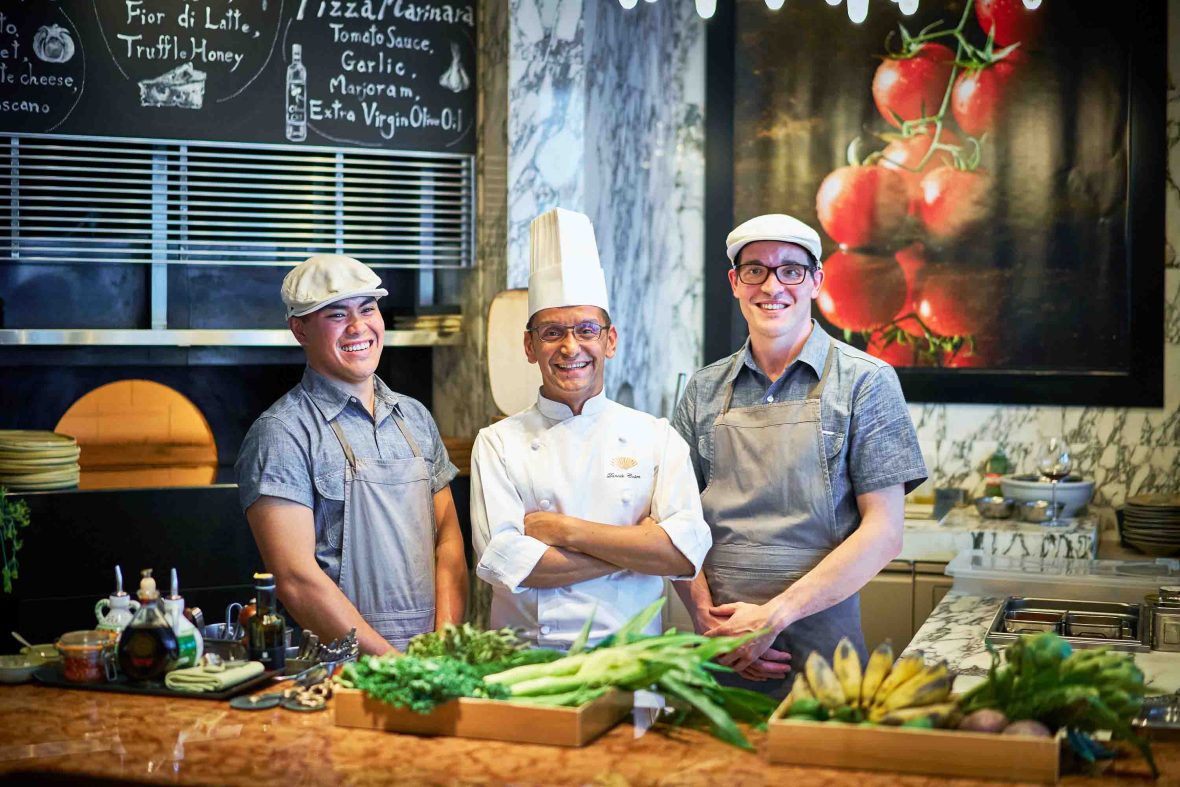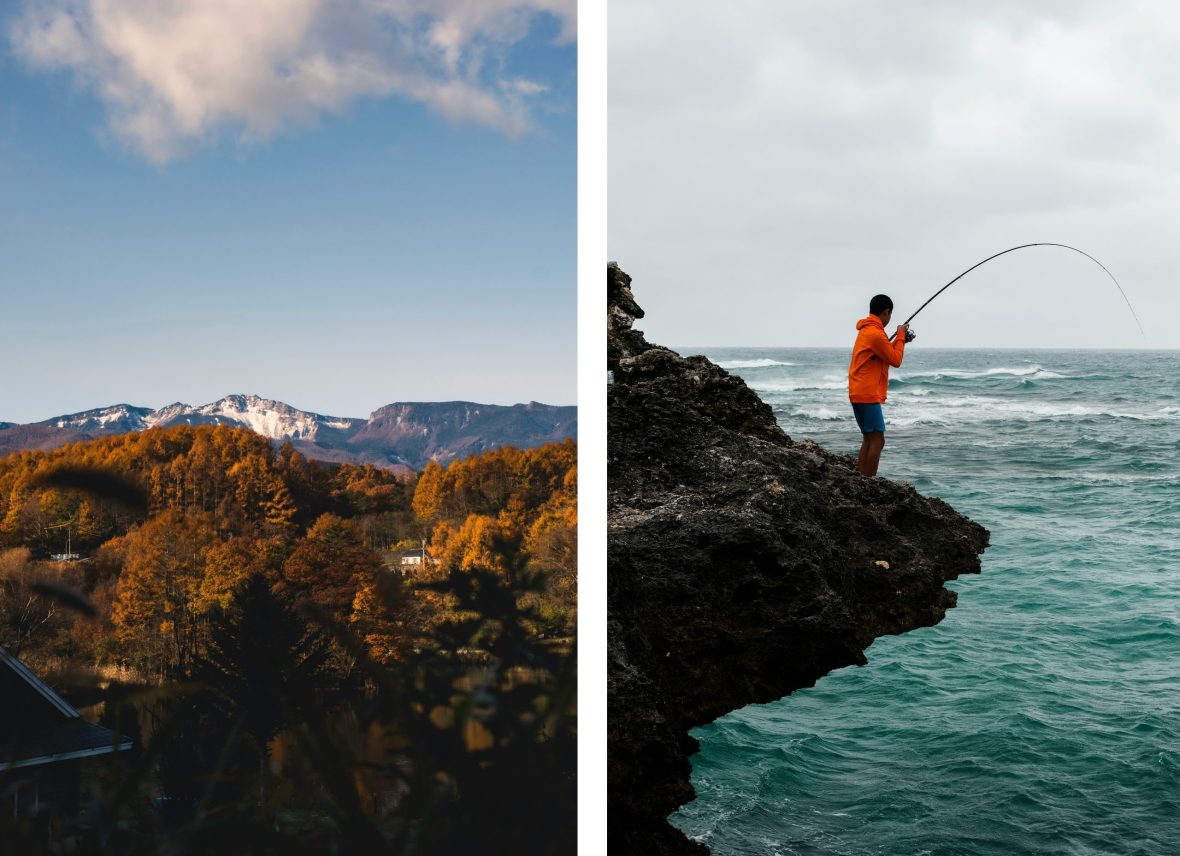
Is Italy home to the best pizza in the world? Not always. Food writer Nevin Martell finds world-class dough in a Tokyo high-rise.


Is Italy home to the best pizza in the world? Not always. Food writer Nevin Martell finds world-class dough in a Tokyo high-rise.
Whenever I eat my way around Tokyo, omakase is my favorite way to do it. Literally meaning ‘I leave it up to you’, omakase does away with the menu and lets the chef choose. All you have to do is eat, and say “Arigatō” (thank you).
I’ve devoured tempura-fried-everything—including featherweight fish bones that crunched like delicate potato chips—at the nearly 140-year-old Ginza Tenkuni, and eaten a flood of oceanic delights at the Michelin-starred Sushi Dai in the Toyosu Fish Market. At these places, I may not have known what was being served next, but it was always food that met my expectations of eating out in Japan’s capital.
But as I rode the elevator to the 38th floor of the Mandarin Oriental, hovering 600 feet above the city’s streets, I was excited for an omakase that would make more sense in Naples, not Tokyo: Pizza.
Recently ranked the third best pizza restaurant in the world by the prestigious 50 Top Pizza guide, The Pizza Bar On 38th offers an ever-changing pizza omakase, not to mention a breathtaking view. With only eight seats at its l-shaped marble counter, arranged around an open kitchen, the restaurant offers two lunch services and two dinner services daily.
Both doughs are hydrated like they’re movie stars, using San Pellegrino sparkling water.
This micro-sized pizzeria is the work of Daniele Cason, its Italian-born creator and the hotel’s executive chef. When I talked to him recently, he disabused me of the notion that his restaurant doesn’t fit in with the city’s contemporary restaurant scene. “Tokyo has become a pizza destination,” he says, name-checking other trip-worthy standouts Savoy, renowned for its pizza finished with raw Maguro tuna, and Pizza Studio Tamaki, which serves small format Neapolitan-style pizzas that allows guests to try multiple variations in a single meal.
When the hotel approached him over a decade ago about designing a pizza concept from scratch, it was a challenge. “I had zero pizza background,” he admits. “I’ve always loved eating it, but I didn’t make pizza until I was given this project.”

Cason knew he wanted to make the pizza alla pala (Roman-style pizza) he grew up eating in Rome, where he went to culinary school and began his career. For inspiration, and to learn the technique for forging the dough, he contacted an old schoolmate, Gabriele Bonci of Pizzarium Bonci, now one of Italy’s most famous pizza chefs and the subject of an episode of the Netflix hit series Chef’s Table. Bonci let Cason spend a night observing the work in his pizza lab. That short visit was enough to give Cason direction as he developed his recipes and the restaurant at the Mandarin Oriental.
Though the pizza toppings and other dishes are ever-changing, the meal always features eight slices of pizza, including two classic tomato-based pizzas, such as margherita, marinara (no cheese), pomodoro (Neapolitan classic), or diavola (with salami).
The remaining rounds are either cheese-based or seasonal offerings. These of-the-moment pizzas represent some of Cason’s most imaginative flavor combinations, such as a purée of three different types of spring peas with smoked olive leaf swordfish, saffron, and blue-veined Castelmagno cheese from Italy’s Piedmont region, or octopus with green peppers, corn, edible flowers, and habanero peppers.
Cason uses two different doughs at the restaurant, each made with a proprietary flour blend sourced from a family-owned mill in Italy’s Piedmont region. Legerro (light) dough is used for tomato-based pizzas, while saporito (flavorful) dough serves as the palette for seasonal and cheese-based pizzas. Both doughs are hydrated like they’re movie stars, using San Pellegrino sparkling water. “For the minerality, not the gas,” explains Cason. “It’s a very flavorful water, so it adds an interesting flavor to the dough.”
The doughs are fermented for 48 hours before being garnished with toppings and baked for seven to 10 minutes in the oven at 680°F, much lower than the volcanic temperatures required for Neapolitan pizza. When they’re ready, they are divided into eight equal pieces using a pair of custom-made pizza slicers made with Damascus steel. One slicer was made by a craftsman in Hiroshima, which cost USD$3,000; the other came from a Pilipino artisan, who charged USD$3,500. “It’s chef knife craziness applied to pizza cutters,” Cason admits with a chuckle.
The final bite in my omakase: A small square of crust piled high with chestnut mascarpone, candied chestnuts spiked with grappa, and chocolate.
Some creations may only be offered for a brief window, depending on the availability of the ingredients. For example, the restaurant sources rare white figs for a single week in July which Cason adds to a special pizza with Nagano-made prosciutto and Japanese-crafted buffalo milk blue cheese.
A highlight of the meal is the pizza-adjacent sandwich. Focaccia style whole-wheat bread is split in half, then filled with Taggiasca olive tapenade, mascarpone, provolone, and fior di latte mozzarella. Baked again, it’s finished with negi (Japanese spring onions) and freshly shaved truffles.

Roughly 80 percent of the toppings are sourced within Japan from a network of nearly 70 farmers, producers, and foragers stretching from Hokkaido in the north to Okinawa in Japan’s far southern archipelago. Cason strives to meet the makers to forge a closer relationship and glean a better understanding of their craft, and he sometimes takes his team along for more hands-on expeditions, such as foraging for mushrooms. “It’s good for them to learn how hard it is to pick them compared to how easy it is to eat them,” he says.
Travelers from all around the world dine at The Pizza Bar On 38th; in fact, the restaurant is garnering so much interest that Cason is taking the concept around the world this year for a series of pop-ups at other Mandarin Oriental properties in Singapore, Abu Dhabi, and Hong Kong. He also opened Pizza Sapienza this spring at the Mandarin Oriental at Costa Navarino resort in the Peloponnese region of southern Greece.
Wherever Cason goes, he wants to challenge the boundaries of pizza. Take the final bite in my omakase: A small square of crust piled high with chestnut mascarpone, candied chestnuts spiked with grappa, and chocolate. I didn’t expect those flavors on a pizza, much less at a pizzeria in Tokyo, but that was exactly the point.
****
Adventure.com strives to be a low-emissions travel publication. We are powered by, but editorially independent of, Intrepid Travel, the world’s largest travel B Corp, who help ensure Adventure.com maintains high standards of sustainability in our work and activities. You can visit our sustainability page or read our Contributor Impact Guidelines for more information.








Can't find what you're looking for? Try using these tags: